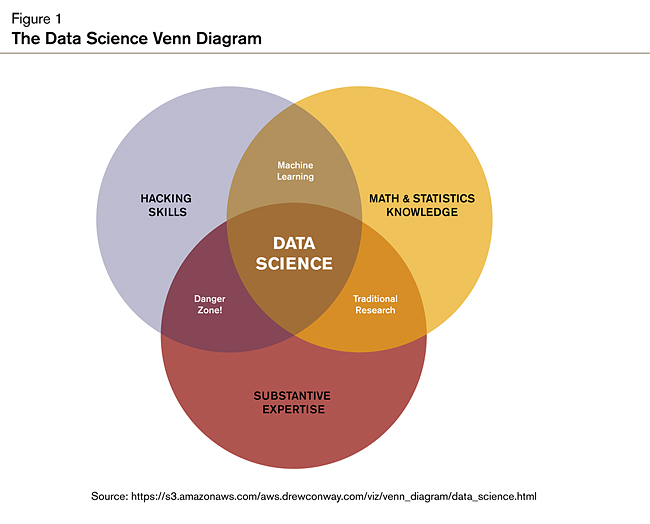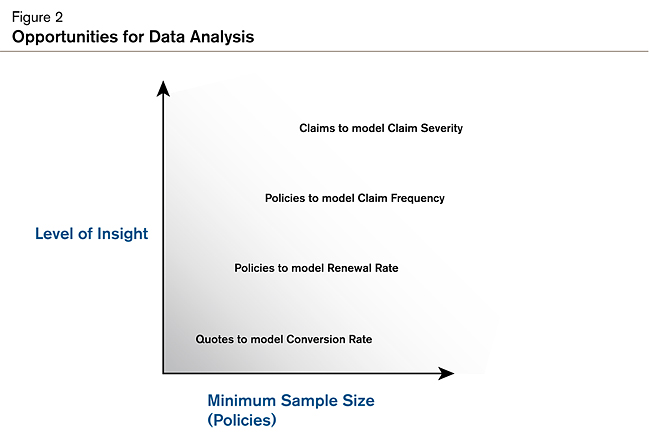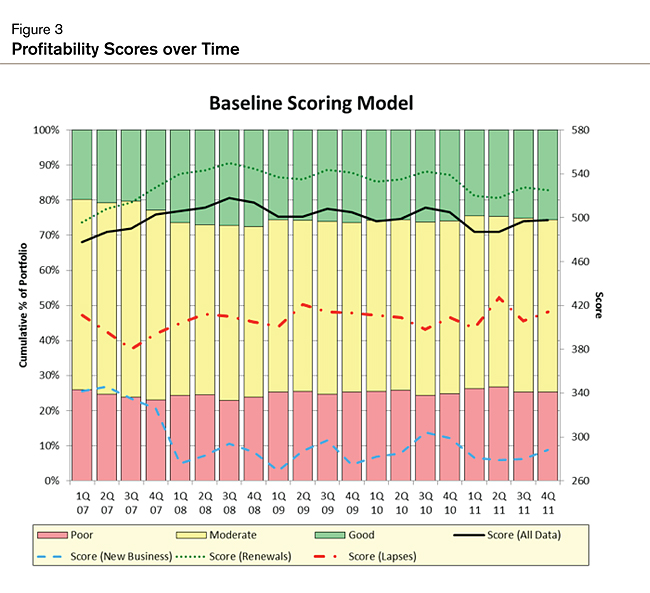This article was originally published in InsuranceERM.
“Big data” and “data science” are ubiquitous phrases in business articles right now. Software and hardware companies new and old are pushing solutions for big data. Companies are trying to recruit data scientists. You may be wondering, what exactly is big data, and is it really a big deal?
What is big data?
The term big data is vague. Some have proposed that “big” implies any data where, because of its volume, its management and analysis is an issue given the current toolsets available. But as our hardware and software become more powerful, the threshold of big data changes, making this an unhelpful definition. “Bigger data,” as in “bigger than you can effectively deal with using traditional tools,” might be the more appropriate description.
One of the breakthroughs making big data valuable to businesses is the ability to quickly combine and evaluate both structured data (organized in a data model, such as rows and columns in a relational database) and unstructured data (not pre-organized, like text or images). Big data is often generated through automated or very inexpensive means, such as text, weblogs, transaction records, or sensors, including point-of-sale scanners and radio-frequency identification (RFID) tags. Cell phones with GPS are also sensors. The advent of digital communication and social media has opened the door to a huge amount of digital text and image content. Sensors in our homes and cars (and even ones we wear on our bodies!) generate multiple streams of different measurements at sub-second frequencies. And our computers automatically generate records of our activities, from browsing on the Internet to all our digitally recorded economic transactions. Rampant low-cost data generation means that data can grow to terabytes and petabytes (1,000 terabytes) very quickly.
What is data science?
“Data science” and “data scientist” are other relatively new terms. The definition of data science is even less clear than big data, but Drew Conway, a leading expert who writes and blogs about data science, has proposed the following definition: the intersection of hacking skills (meaning computer programming skills to manipulate files and implement algorithms, not the skills for breaking into secure systems!), statistics and machine learning knowledge, and subject matter expertise, shown in Figure 1.

Data scientists use both statistical techniques and machine learning algorithms for identifying patterns and structure in data. In fact, their toolset is very similar to those of statisticians, data miners, and predictive modelers. Here are some definitions of the various types of techniques used:
- If you make assumptions about a type of random distribution for your data in order to fit model parameters or make inferences, you are applying statistics. Regression models are a popular type of statistical technique that assumes data come from a normal bell-curve distribution.
- If you are giving the computer rules and/or algorithms to automatically search through your data to “learn” how recognize patterns and make complex decisions (such as identifying spam emails), you are implementing machine learning. Examples of machine learning algorithms are decision trees, Random Forests, boosting, neural nets, nearest neighbors, and support vector machines.
- If you are giving the computer rules and/or algorithms to automatically search through your data to discover previously unknown and useful relationships in your data, you are data mining. Many of the algorithms used for data mining came from statistics and machine learning.
A predictive modeler may use any or all of these approaches to predict a value or likelihood of an outcome, given a number of input variables. A data scientist applies these same approaches on large data sets, writing code and using software adapted to work on big data.
In addition, data scientists have substantive expertise and deep domain knowledge. Drew Conway defines this as asking “motivating questions” (i.e. the important and valuable questions that can be answered with the data) and testing hypotheses. Understanding what the important questions are requires expertise in the field in which they work. Often data scientists will use storytelling techniques to effectively communicate the insights from the data to others. Visualization is an important component of communicating with data, as it helps the audience efficiently observe and understand relationships and patterns. While data scientists working in journalism have taken visualization to high levels of sophistication, all data scientists should have some familiarity with the principles of design and visual communication with data.
Dealing with big data
Managing and delivering real value from big data requires approaches different from using data stored in a relational database. There are three fundamental approaches: massively parallel processing (MPP) databases, “Not Only SQL” (NoSQL) frameworks, and columnar databases. MPP and NoSQL both use cluster computing, in which a set of connected computers (called “nodes”) work together as a single system. In cluster computing, the data is divided up and stored on different computers; data processing and analysis operations are run locally, or distributed, on each machine. Columnar databases are most effective with only special types of data (e.g. data fields that have only a few distinct values), which precludes their use for unstructured data.
MPP databases are relational databases specially designed to span the clusters. Examples of MPP databases are Teradata, Netezza, and Greenplum. Oracle and IBM offer MPP “appliances” for their database products. Queries can be written in the familiar SQL language, and database administration is similar to that used for existing relational databases.
NoSQL technologies take a different approach to managing big data. These include frameworks such as Hadoop, Dremel, and High Performance Computing Cluster (HPCC), with Hadoop being the most popular. Hadoop uses a simpler, more flexible data structure than a relational database and can achieve scale and performance on lower-cost commodity hardware. A key component of Hadoop is a programming model called MapReduce, which distributes processing across the nodes of the cluster. Data can also be accessed with a SQL-like language called Hive that builds MapReduce programs in the background. Still, using Hadoop requires new skills for system administrators, data analysts, and predictive modelers.
All of these frameworks make it possible to query and summarize big data. This is very useful when selecting, sampling, and/or summarizing data from a big dataset to a size manageable for further analysis, and modeling using software available for a PC or server. But what if the analytics and modeling algorithms need to be directly run on the big data? There are two options: use software/packages with algorithms that have been written to take advantage of the distributed processing power of the cluster (either MPP or NoSQL), or write your own distributed algorithms.
The available library of statistical and machine learning algorithms for evaluating and learning from big data is growing, but is not yet as comprehensive as the algorithms available for the non-distributed world. The algorithms vary by product, so it is important to understand what is and is not available. An alternative to using analytic software is to write the algorithm in a MapReduce style of programming and run it on Hadoop. There are a number of languages that support this, including R, an open source programming language for statistical computing and graphics. Even so, not all algorithms familiar to the statistician and data miner are easily converted to the distributed computing environment. The bottom line is that, while fitting models on big data has the potential benefit of greater predictive power, some of the costs are loss of flexibility in algorithm choices and/or extensive programming time.
Algorithms written to run in an MPP environment are also called in database algorithms. Some of the database vendors have their own software or R packages to run in database algorithms. SAS sells a product that works with many types of MPP databases as well as Hadoop. Statistical and machine learning algorithms that run on Hadoop clusters are also available in Mahout, an open source algorithm library for Hadoop.
There are some other options for running analytics on “bigger” data outside of MPP/Hadoop, but each has tradeoffs between algorithm flexibility, predictive power, programming time, run time, and cost. From the least expensive to the most expensive, some of those options include:
- Sampling the data. This may cost some predictive power, but shortens time and does not require investment in new software and/or hardware. If well thought out and coupled with the appropriate tools, sampling can work with minimal if any loss of predictive power.
- New software/packages that hold the data out of the memory, such as the bigGLM and bigrf packages in R and the RevoScale algorithms of Revolution R. These enable processing of larger datasets (and possibly better predictive power) but at the cost of more programming time and/or new software cost. Also, at present only a limited number of algorithms are available.
- New hardware with larger memory. This can be an expensive option for a very large amount of memory, but it enables processing of larger datasets with minimal additional programming time or software costs and no loss of algorithm choices. More processors can also help, if the analysis software has been written to take advantage of them (this is called multi-threading).
Big data and insurance
Currently only the largest insurers have traditional policy rating and claims data that would be considered “big” (i.e. potentially unmanageable with a relational database). But insurance companies of all sizes are encountering big data from new sources such as their website traffic, vehicle telematics programs, and social media.
Companies are already trying to use this data to market, price, and underwrite their insurance policies, but this is just the beginning. In the near future, experts anticipate completely new data sources, and applications such as “home telematics” or “usage based home insurance”—using sensors in structures to measure moisture and detect flooding in the house, track how many occupants are in the home at what times, and measure utility and appliance usage—to use as predictors of property claim risk.
Most companies have IT infrastructures that were not designed for the volume of data generated by their web traffic or telematics programs. This big data is very expensive (if not impossible) to manage using their existing relational databases. Companies often give up and discard it, keep only summaries or very short histories, or outsource the storage to a vendor that provides them only limited reporting and analysis capabilities. These choices leave a data scientist without the means to access, leverage, and integrate the big data to find new insights and value. For example, while social media monitoring is often outsourced, the next opportunities for insurers to leverage social media data are in areas such as distribution, underwriting, and claim fraud detection, all of which requires integration with internal data sources. Telematics data can help identify marketing opportunities, streamline accident reconstruction, or recover auto thefts. In order to benefit at all from big data, insurers must gather it, store it, and access it to discover these insights and make better decisions.
Leverage the little data
While the media is enamored with the granularity and possibilities of big data, opportunities still exist to apply the tools of data science to our “little data,” such as:
- Leveraging unstructured data, including notes from customer relationship management systems or claim files
- Integrating data from multiple systems, and/or external sources such as vehicle characteristics, geographic information systems (GIS), etc.
- Exploring machine learning techniques to see if there are previously unrecognized patterns in the data
- Using visualization principles and new software for data visualization to explore data and explain insights to decision makers
Companies that have operational databases without a data warehouse to facilitate access for analysts and modelers have a tremendous asset that they cannot leverage. A data warehouse without good tools for business analysts to access it is a significant lost opportunity.
At Milliman, we have found that massive amounts of data are not required for us to discover valuable insights through predictive analytics. Even small companies have data that can be leveraged. For example, even if there are not many policies, there are probably enough quotes to analyze. Figure 2 illustrates some of the types of analyses possible as a company grows in policy volume.

We have revamped homeowners insurance rating plans with only a few thousand policies. Useful models for claim severity have been built with as few as 300 claims. We have identified high- and low-profitability segments in a book of business with as few as 10,000 claims. Clients can use these models to track the expected profitability of their portfolios over time, illustrated in Figure 3.

Of course, dataset size and the level of noise in the variables modeled will impact the power of the models and the types of analyses that are feasible, but it would be a mistake to underestimate the potential of “little data.”
Conclusion
Big data has already arrived in the insurance industry, and there is no going back. Companies need to start creating an intentional path to manage and use it. Data science is the key to extracting value from big data, but the innovations of data science can be applied to “little data” as well to discover new insights and make better decisions. Big data is indeed a big deal, after all.